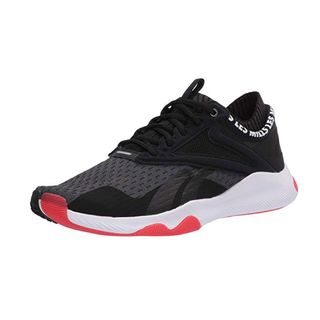When it comes to weight loss workout strategies, walking is totally underrated. It’s time to change that. It has plenty going for it, including that you don’t have to wear Spandex, you don’t have to go to a special gym to do it, and you can even get medals for it (more on that below). And there’s no learning curve.
Not only can you lose weight by doing it, but the more you weigh, the easier it’s going to be drop pounds, points out walking coach Michele Stanten, founder of MyWalkingCoach.com and author of The Walking Solution.
How much weight you can lose by walking varies from person to person, but Stanten has seen women drop as many as 14 to 22 pounds within eight weeks of starting a walking routine. Men tend to lose weight faster. (So to do the math, if you start now, you could be down a size or two by Labor Day.) Other people lose it more slowly, and anecdotally, sometimes those who lose it more slowly tend to keep it off longer.
To make walking really work for your weight loss efforts, keep a few things in mind, says Stanten:
Do more than you’re doing now.
There’s no magic formula for how many steps, miles, or hours you have to walk to lose the amount of weight that you want. Starting out, the key is to do more than you’re doing now. “If you have a job where you’re on your feet all day, you have to do more than that,” Stanten says. “But if you have a sedentary desk job, a walk every evening after dinner may show real results.”
A lot has been said about getting a baseline of about 10,000 steps a day for health reasons. If your goal is weight loss, you’ll likely want more than that once you get into a routine. But you don’t need to start there. Get your baseline first. “If you’re only getting 3,000 steps on a typical day, don’t try to get 10,000 steps the next day. That can be really discouraging. Aim for 5,000 every day for a week. Then go up to 7,000 the next week,” she says.
Push it.
The best way to melt pounds off is to challenge yourself with intervals—periods of faster walking interwoven with periods of slower walking. Research has found that interval walkers lose more weight than people who just go the same speed all the time. One study of people with type 2 diabetes found that interval walkers who alternated three minutes of fast walking with three minutes of average-speed walking not only helped their boost their fitness and control their blood sugar better than steady-state walkers, but their body composition changed, leaving them with less belly fat and body fat.
Of course, if you really want to change your body composition, you’ll want to add strength training to your life. Bonus: It helps you walk faster, Stanten says. Also remember that managing stress, sleep, and food well all contribute to weight loss, too.
Make it your thing.
You don’t have to walk an hour every day to lose weight at first (though it’s good to work up to it), but it’s important to get in the habit of walking every day. Just make it part of your daily routine—something you do without even thinking about it—even if you’re only walking for 10 or 15 minutes on some days of the week.
Ideally, you’ll want two to three interval walks, or shorter, faster, higher-intensity walks a week, a couple hour-long ones, and the rest can be short, moderate-intensity ones. The shorter ones are great to do with your partner, your dog, a friend, or just head-clearing walks on your own.
Don’t just leave walking to your workout; do it wherever you can (the whole park the car farther away from the store thing). And taking the stairs is such familiar advice that it can fade to the background, but it burns more calories than walking on a flat surface and helps develop leg and glute muscles, too.
Don’t let someone’s runner superiority complex get you down.
You burn as many calories if you walk at 5 MPH—“which is doable with training and practice,” Stanten says—than someone who’s jogging at that pace.
Sign up for an event.
“One of the things that keeps people motivated about walking is signing up for an event,” says Stanten. Plenty of 5K and 10K races are walker-friendly. “Most people don’t know you can walk a half-marathon,” Stanten says. Some races are better than others for that, so check time cutoffs carefully.
Increase your heart rate.
Although you don’t need to run, picking up your walking speed can burn more calories because it increases heart rate. But don’t worry, there’s no need to sprint—you can get a good workout in by walking at a moderately intense pace. According to the Centers for Disease Control and Prevention (CDC), a moderately intense workout can be obtained by raising your heart rate to 50–70 percent of your maximum heart rate.
So how do you know whether you’ve nailed this sweet spot? The intensity of your heart rate can be obtained by using a heart rate monitor or activity tracker with built-in heart rate monitor.
Make walking easier by ignoring these myths.
Gym Gear

Reebok Men’s HIIT TR Cross Trainer, Black/White/Radiant Red
Reebok
amazon.com
$90.00
SHOP NOW
Hit the gym with these shoes that are great for high intensity workouts

Marmot Slate Weekender Travel Bag, Black
Marmot
amazon.com
$88.92
SHOP NOW
Carry your gym clothes in style

S’well Vacuum Insulated Stainless Steel Water Bottle
S’well
amazon.com
$33.09
SHOP NOW
Stay hydrated with this bottle that keeps your water cool all day long

Hilo Life Keto Friendly Low Carb Snack Mix
Hilo Life
amazon.com
$14.98
SHOP NOW
Reuel with a high-protein, low-carb snack
Source: Read Full Article